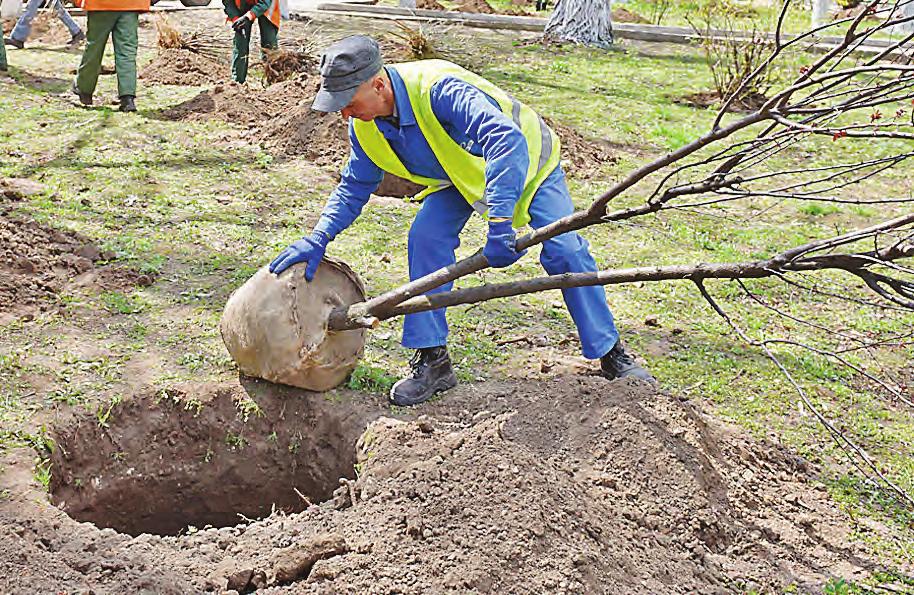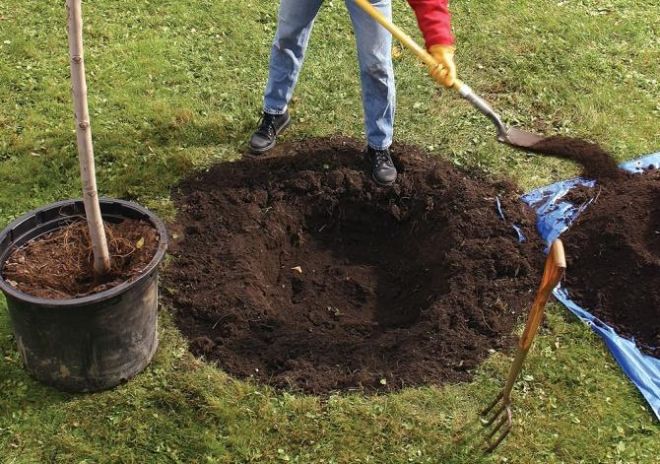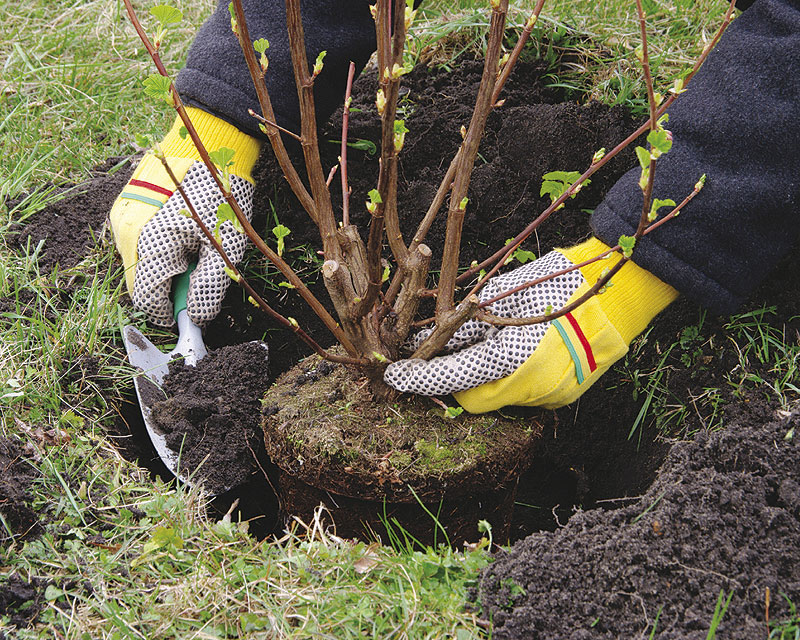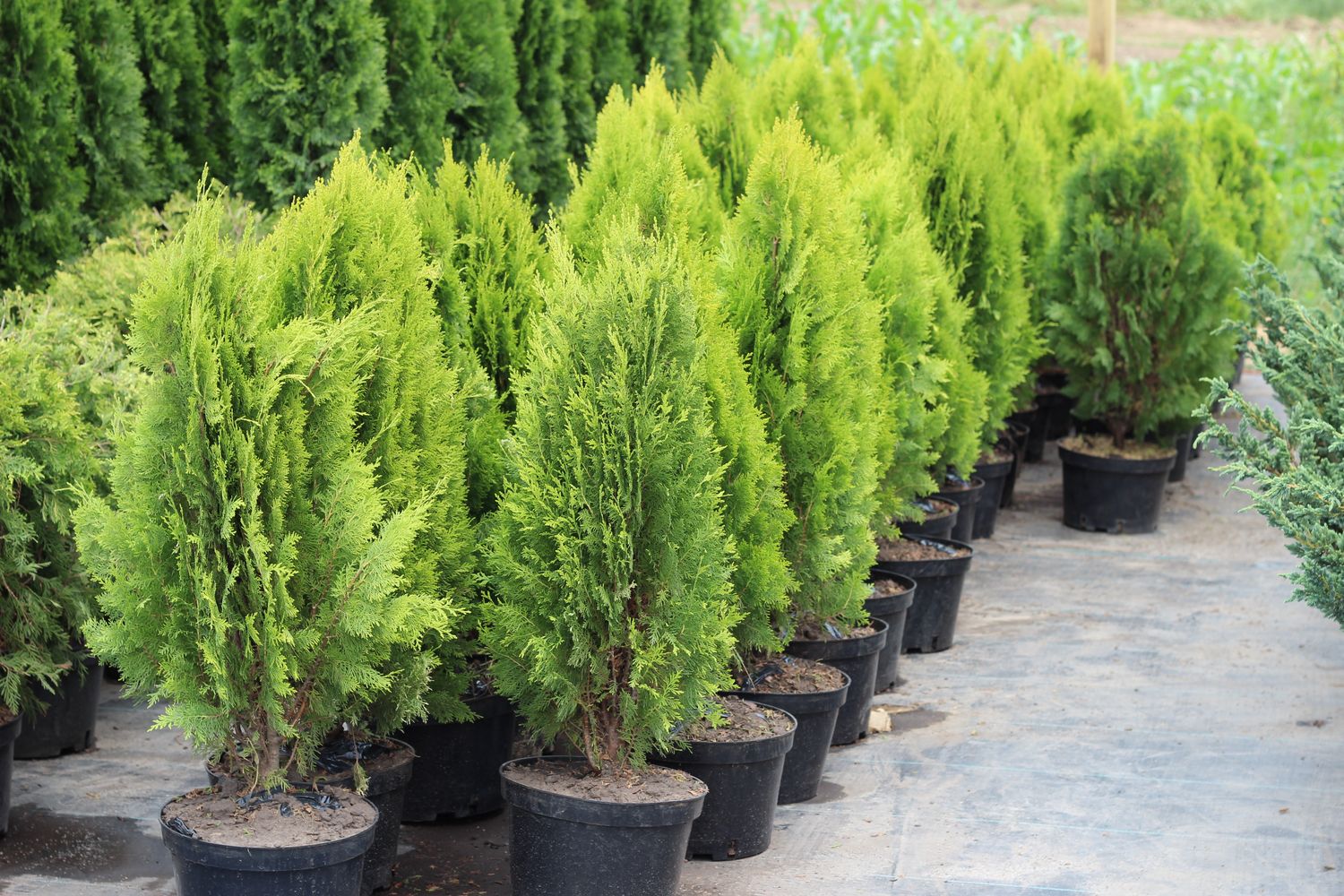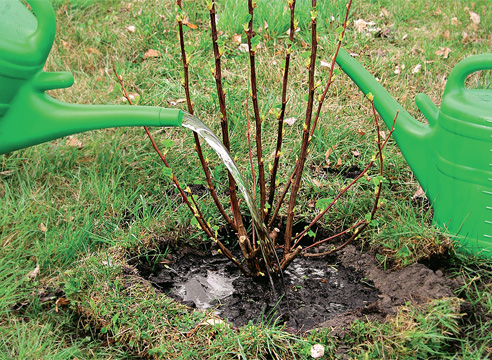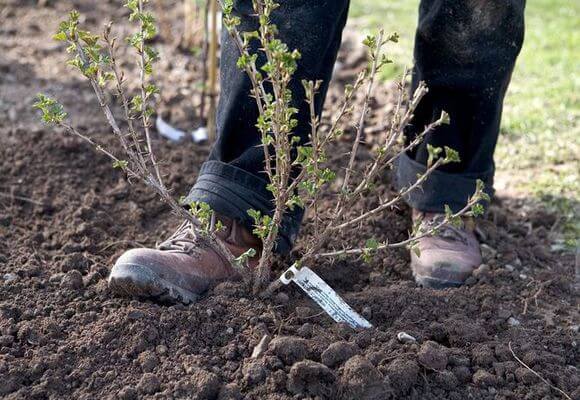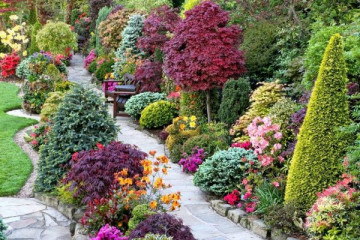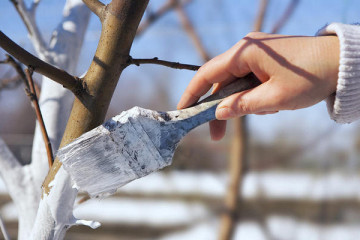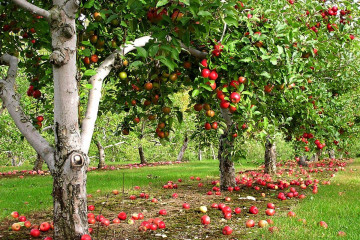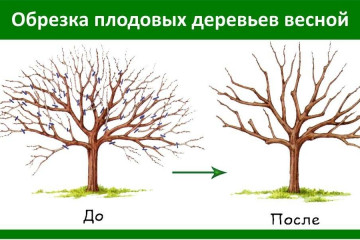Planting trees in spring, beautiful ornamental trees
Content:
- Planting trees in spring
- Beautiful trees for the garden
- Choosing a large-sized seedling
- Planting dates for seedlings with a closed system and in containers
- Tree care after planting
- Planting and transplanting fruit trees
- How to properly plant fruit tree seedlings
- Mini potted trees in the garden
- Features of planting trees and shrubs in the fall
Initially, you need to choose the right season for planting. Many believe that spring is the ideal option, but in some regions of the Russian Federation it is worth planting in the fall, for example, in the south. If the climate is arid, the seedling will have time to take root. For example, trees in the Moscow region can be planted both in autumn and spring, since the climatic zone is moderate. Trees in Siberia take longer to root and develop a seedling. Many specimens may not survive the winter. Trees in the Urals, as well as in Siberia, are also best planted in the autumn season. In addition to determining the right season, you need to know how, what trees to plant and care for.
Planting trees in spring
There are several benefits to planting seedlings in spring. You can observe the development and determine whether the seedling has taken root or not. After winter, the land is still not depleted, therefore it is more fertile. There are drawbacks - a small selection on the market, you will have to water the plant more often in the summer.
General recommendations on how to properly plant trees in spring:
- Choosing a place. It is better to place the plant on the south side or southwest. It is worth considering the compatibility between different types of trees and making a distance of at least 1.5 m.
- Prepare the soil. Two weeks before planting, the soil should be formed - weeds should be selected from the soil and fertilized. For 1 m², use 5 kg of compost or 6-8 kg of sulfate fertilizers, peat (can be brought from the forest). Stir the ingredients and leave to rest.
- Prepare the pit. Draw the outlines with a shovel. The pit should be round. The sizes are determined as follows, the parameters of depth and circumference should be 1.5-2 times larger than the root ball of the seedling.
- At the bottom of the pit, lay out a sod layer of soil that was removed during the digging process. A seedling is installed in the center, which is sprinkled with a previously prepared substrate. Compress the earth a little, form a hole.
- Water the plant immediately. It is advisable to use a watering can so that the water does not wash out the root. Enough 10 liters. In the future, watering is carried out in accordance with the needs of the plant and weather conditions.
This is how trees are planted in the spring according to the standard scenario. If you choose a special variety or type of plant, then the conditions may change and be supplemented with new points. Ornamental and non-standard trees are chosen to decorate the area near the house, to make it favorable for recreation.
Beautiful trees for the garden
In addition to planting fruit trees, it is worth taking care of the aesthetic appearance of the site. There is a huge variety of breeds that have their own distinctive characteristics.The main determinants of beauty are flowers, leaves and the shape of the trunk. Beautiful trees can be evergreen, flowering, or miniature. The choice should be made in accordance with personal preferences and the general concept of the site.
Trees with earrings
Trees with earrings can become a real decoration of a garden or a summer cottage. Usually specimens with "decorations" are low-growing with a fluffy crown. There is a huge variety of options.
Ash-leaved maple or American maple is a wild variant of a cultivar that was introduced to Europe over 300 years ago. It spreads quickly thanks to airplane seeds, which are collected in earrings. There are many similar maples that have different leaf colors. Among all the variety, you can choose a cultivated specimen that can be cropped. In addition, you can plant a deciduous version of spruce species. Birch is also a good choice.
Mini trees
Mini trees can be a solution to a common problem when there is little planting space. Thanks to selection, many varieties have been bred that differ in dwarf sizes. It is difficult to accurately determine the name of a particular option, since it can be fruit and deciduous specimens. The advantage is not only the unique size, but also other characteristics.
Trees with red leaves
To diversify the green color of the crowns, you can choose special varieties of trees in which the leaves are red. The most popular species are red maple and mountain ash. The first option requires special attention, care, and the seedling is expensive. Rowan is a simpler and unpretentious option, but not as spectacular. Trees with red leaves stand out from the usual landscape design and are not too whimsical to care for.
Evergreen trees
It is beneficial to plant evergreen trees in the garden or on the territory of the site. They will delight the eye both in winter and in summer, they do not require special care, there is no need to rake out fallen leaves. They are conventionally divided into coniferous, deciduous, fruit. The most popular are:
- spruce and its types;
- mulberry tree or mulberry bush;
- fir;
- larch;
- cedar;
- Pine.
Stump trees
Standard trees are suitable for shaping the design of small gardens, alleys and flower beds. They have an even neat trunk, the crown can be columnar, spherical, triangular. The wood is even without gusts and snags, branches begin to form at the very top of the trunk.
The trees on the trunk can be fruit trees or deciduous trees. It is possible to obtain such a variant of a plant independently by grafting or forming a crown by pruning. You can pick up a copy with any characteristics. There are drought-resistant varieties, frost-resistant trees with white flowers and many other colors.
Choosing a large-sized seedling
If you do not want to wait until the tree grows out of a small seedling, then large-sized seedlings will be the solution. It is an almost fully developed plant and can represent any variety or type of tree.
As a supplier, you can choose a private person or a good nursery. What to look out for during the buying process:
- the packing of the root must be intact. The roots in it should be located neatly without creases, strong bends;
- the trunk should not be mechanically damaged, and the branches should be neatly tied to the trunk;
- the length of the plant must be at least 2 m;
- each stem must be alive, so you cannot choose specimens that have stood in the pavilion for more than three months;
- the earthen lump must correspond to the parameters of the trunk 2-3 m = 1.2 m in the diameter of the lump.
How to choose a landing site
A summer cottage can be an ideal place for planting large-sized plants, but it is important to choose the right place. In this case, several nuances should be taken into account:
- you need to check the site for the level of groundwater;
- if necessary, you can make drainage at the bottom of the pit;
- nothing should interfere with the growth of the tree;
- the distance from other plants must be at least 1.5 m.
Other selection conditions are made in accordance with individual preferences, landscape design, unique needs of the plant variety.
Digging a hole
The next step is to prepare the pit. The dimensions should correspond to the parameters of the coma - be 2 times the size of the root system. It is advisable to make the walls exactly vertical. It is not advisable to use the soil from the pit for burying the root system.
The soil at the bottom of the pit should be as soft as the prepared substrate. The ideal option would be a mixture of peat and sand in a ratio of 9: 1. It is not necessary to completely fill up the lump, about 1/3 of the formation should remain above the ground. Then it should be covered with the extracted soil. It is not worth fertilizing immediately, it is advisable to wait about a week.
Planting dates for seedlings with a closed system and in containers
To get a healthy tree, many nurseries plant seedlings in special containers, bags or nets. This technique helps to form a healthy plant root system.
The container can retain the root for a long time, so immediate planting after purchase is not required. Such sprouts can be planted in any summer, spring or autumn season. The main condition is positive air temperature.
Tree care after planting
It is not enough to plant a tree, you need to carefully look after it for a long time. Sapling care algorithm:
- the plant needs daily watering, which is done in minimal quantities so that the root system does not lock up;
- Feeding should be done once a week. It is advisable to use sulfate or organic fertilizers. The dose should be minimal;
- it is worth spraying the crown with special agents that will help save the leaves and bark from pests.
In addition, you need to love the seedling and pay as much attention to it as possible: monitor the condition of the leaves, bark and the growth of the trunk. You can grow a whole forest of unusual trees if you follow the rules of care.
Planting and transplanting fruit trees
Before planting, you need to properly dig up the tree. Transplanting trees begins with extracting a seedling:
- Dig in a tree at a distance of 0.5 m from the trunk.
- When the roots are fully visible, remove the tree by holding it by the trunk.
- Remove excess pieces of soil that remain on the root system.
- Trim off damaged appendages using a pruning shear.
How to properly plant fruit tree seedlings
To get a good harvest, and the seedling takes root quickly, you need to plant in accordance with some algorithm. How to plant trees that will continue to bear fruit:
- Dig a hole 40 cm larger than the root system.
- Drive a stake into the center, to which you need to tie a seedling by the trunk.
- Cover the roots with a mixture of humus, sulfates and topsoil.
- Water the sprout using 1-2 buckets of water.
In the same way, you can transplant a fruit tree, the peculiarity lies only in the method of extracting the seedling.
How to plant an apple tree
You can breed an apple orchard by making the correct planting:
- Prepare a hole in which the root system can be located without the creases of the processes.
- Pre-soak the roots in water to restore balance.
- Drive a peg in the center of the hole.
- Tie a seedling to it.
- Cover with earth that is mixed with humus.
- Water the plant.
This completes the planting procedure, then you should properly care for the fruit.
Planting scheme for fruit trees and shrubs on the site
So that the trees develop well, do not interfere with each other, and the site looks attractive, you need to plan the area:
- trees can be placed in several rows;
- the distance between copies should be more than 1.5 m, 3 m will be ideal;
- the distance between fruit trees should be more than 5 m.
The order of placement on the territory is chosen arbitrarily or according to the design rules.
Mini potted trees in the garden
To plant plants in pots, you need to choose shade-loving trees that can develop regardless of the surrounding conditions. It is advisable to adhere to these rules:
- the pot should contain the root without any problems;
- at the bottom of the container, you need to make several holes to remove excess moisture;
- it is preferable to choose a wooden version of the material for the container so that the soil does not stagnate;
- it is better to choose the south side of the site for placement.
Features of planting trees and shrubs in the fall
Planting trees in the autumn is considered the most relevant. The tree manages to take root well, and the humid climate during this period of the year is more favorable than the spring one. Experienced gardeners recommend this particular scheme.
What trees and shrubs take root well during autumn planting
Not every tree will be able to withstand wintering, so you need to take this into account when planning planting. Decorative specimens take root perfectly in the autumn, as well as:
- currant;
- raspberry;
- gooseberry;
- Birch;
- chestnut;
- all conifers.
No kind of fruit trees should be planted in the fall. Especially if these are broadleaf specimens.
Why is it better to plant shrubs in autumn and trees in spring
This planting system is most relevant for different types of plants. But it is better to know that the tree needs to be planted in the spring, and the shrub in the fall. The explanation is elementary: shrubs are low, and their root system requires longer periods of formation, they tolerate cold well. Trees are more susceptible to low temperatures, which means they require insulation.
Pros and cons of autumn planting
Autumn can be the perfect season for tree planting. But there are also disadvantages of this option. You can start from the moment the foliage has completely fallen (September-November). Benefits:
- seedlings are cheaper;
- no need to prepare for planting for a long time;
- you will not have to spend a lot of time on the procedure;
- the tree has the opportunity to root better.
Disadvantages of autumn planting:
- the seedling may die due to frost, and not take root;
- stressful situations can worsen the development of the specimen;
- insects can crawl under the bark and damage the trunk.
It is advisable not to plant specimens in the shade during this period, the winter sun will help warm the seedling in frost.
In order for the seedling to take root, it is necessary to plant the tree correctly, take good care of it. To do this, you need to know a lot of information about the selected breed. Each rare seedling will require special attention, which consists in watering, feeding, spraying.



